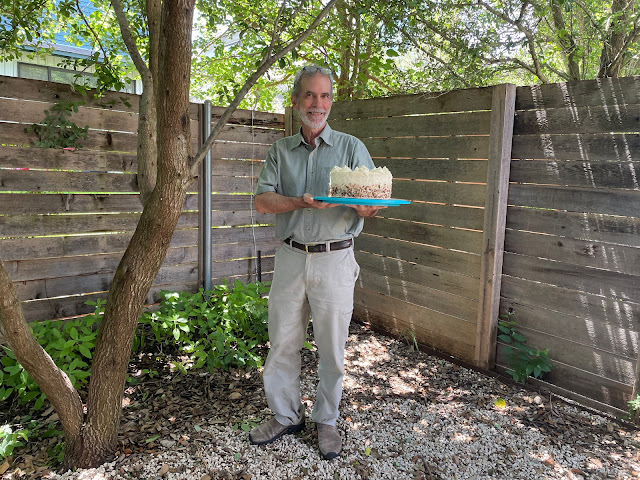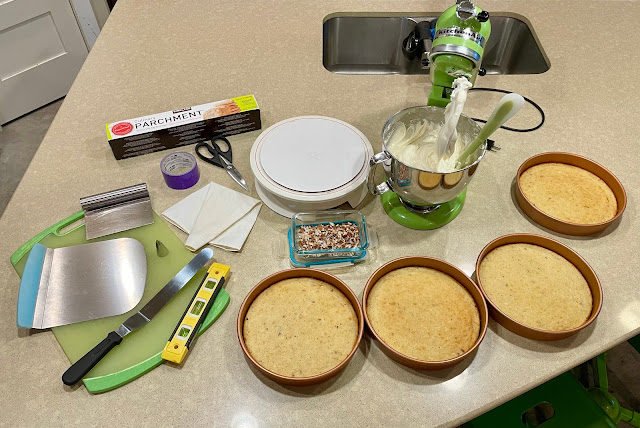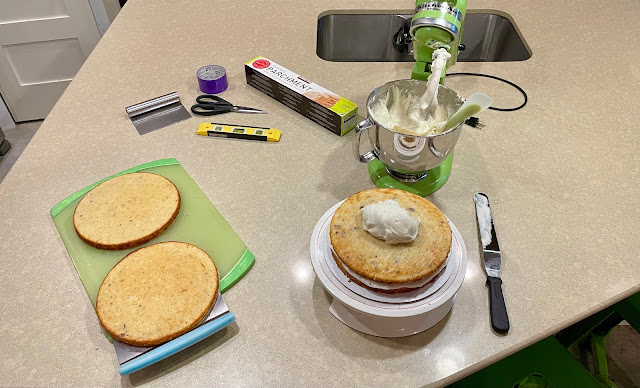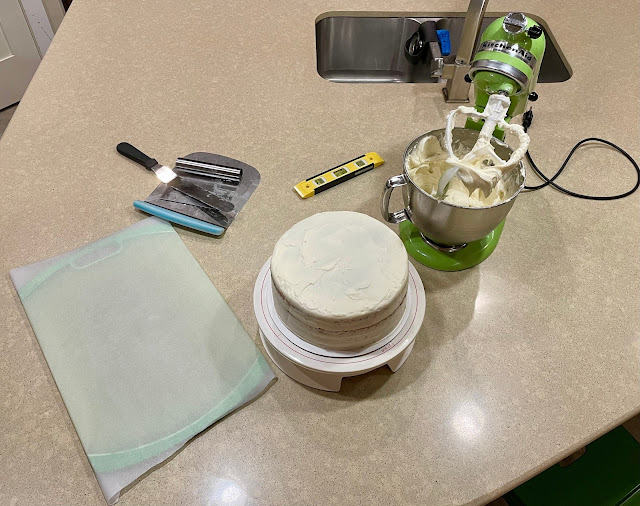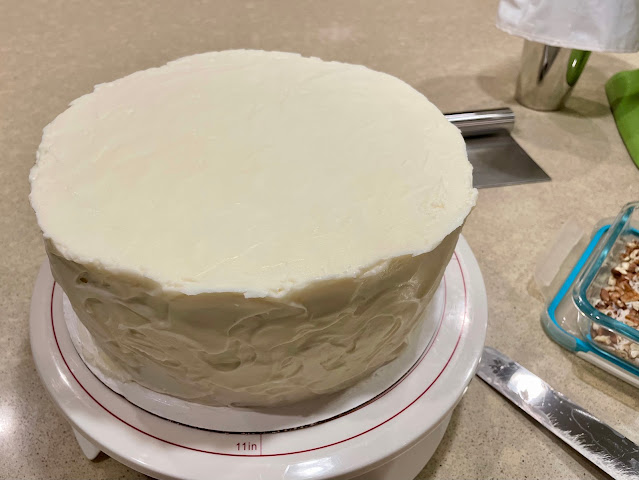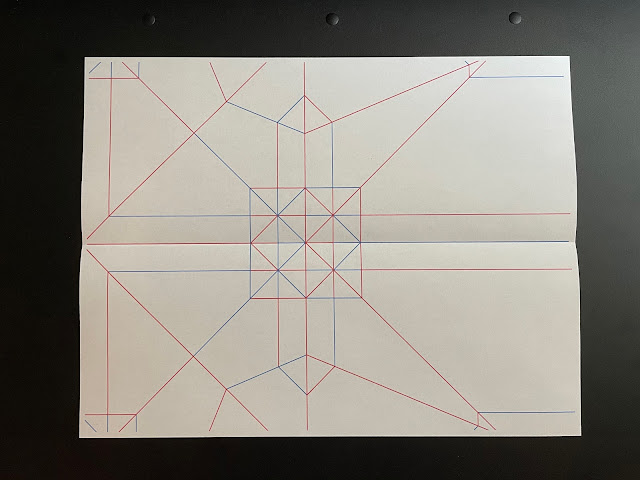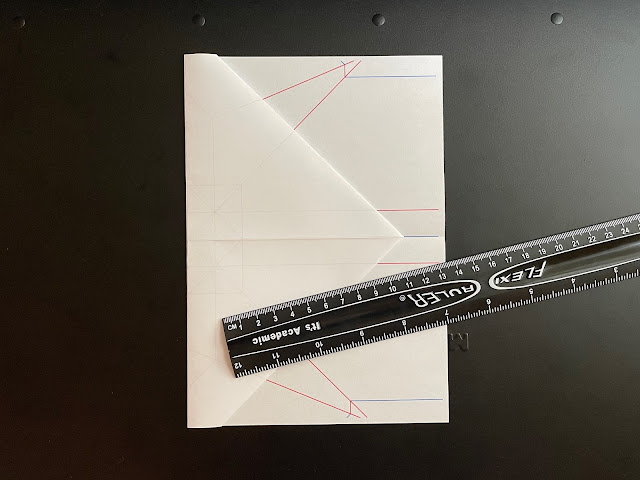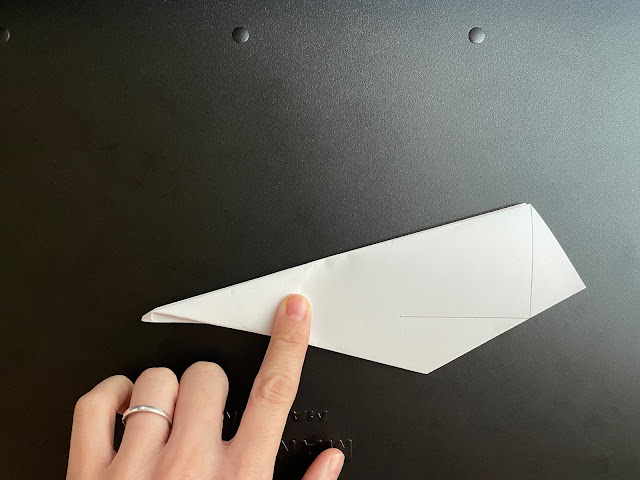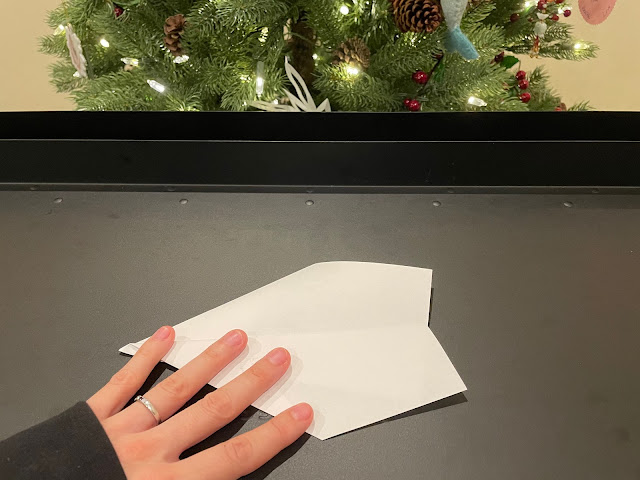I forced my sister and mom to read my buttercream post, and they used what attention they could muster to tell me that they don't like any of the six buttercreams. They're too buttery. So basically, they begged me to write this sequel. And it's a good thing they did, because the internet is a bit of a mess on this topic. So much so, that I have to be a narrator now. No more single sources to cite. No more succinct recipes line after line. No - this mess, started by Mom and Tins, requires serious guidance.
To start untangling what's what, we'll begin with the fact that fluffy thick toppings are frostings and thin glossy toppings are icings. Most of the internet doesn't seem to bother with this distinction, but that doesn't make it any less true. Most cakes, cupcakes, and even cookie cakes typically use frostings, whereas most donuts, Danishes, cinnamon rolls, and bundt cakes use icings.
Before proceeding, I'd like to clarify that the abridged recipes in this post, like last time, leave out the finishing touches of vanilla extract or salt. And speaking of my buttercream post, it's important to know that Ermine Buttercream or Flour Buttercream can also be called Roux Frosting, Cooked Frosting, or Boiled Milk Frosting.
But Boiled Milk Frosting is not to be confused with Boiled Frosting! Even worse, Boiled Frosting is the same thing as Italian Meringue. And while we're on the subject, Seven Minute Frosting happens to be Swiss Meringue. And speaking of Swiss or Italian Meringue, either can be called Marshmallow Frosting. So let's take a step back and talk about meringues, which are also called Foam Frostings. All three meringues can be torched, but French Meringue will deflate quickly if not dried out in the oven. French Meringue is not without its merits, and after it's baked, it's more of a filling than a frosting. It has just barely made it into this post.
1. Meringues
a) Swiss Meringue/Seven Minute Frosting/Marshmallow Frosting
Melt sugar into egg whites, remove from heat, and beat.
Sometimes, Seven Minute Frosting recipes recommend beating over heat.
b) Italian Meringue/Boiled Frosting/Marshmallow Frosting
Slowly pour a hot sugar and water syrup into soft peaked whites and continue beating.
c) French Meringue
Beat whites until frothy, slowly add sugar, and continue beating.
A Daquoise is a baked French Meringue with finely chopped almonds and hazelnuts.
While the titles Swiss or Italian Meringue will always be current, the titles Seven-Minute Frosting and Boiled Frosting are considered somewhat last generation. If you look up an "old fashioned frosting" or "vintage frosting" or "grandma's frosting," you'll probably get Swiss Meringue, Italian Meringue, or Ermine Buttercream. Speaking of Ermine Buttercream, the newer "lighter buttercream" kid on the block is Cream Cheese Frosting, which is just a twist on American Buttercream.
2. American Buttercream Variations
a) Cream Cheese Frosting
Beat butter, beat in cream cheese, and beat in powdered sugar.
b) Sour Cream Frosting
Beat butter, beat in sour cream, and beat in powdered sugar.
c) Decorator's Buttercream
Replace some or all butter with shortening for a very stiff frosting.
Stiff frosting is great for piped decorations like roses.
All frostings are fillings, but some fillings aren't frostings, as we saw with French Meringue.
The only filling that cuts sweetness with acid is curd, the most popular of which is lemon. Lime and passionfruit are close at its heels.
Alternatively, cakes can be filled with jams, jellies, or marmalades. A jelly is a jam that replaces fruit with fruit juice, and a marmalade is a jam made with whole citrus fruits, including the rind.
While curds and jams are good fillers because they're thick, cakes are sometimes served with thinner fruit sauces.
A fruit purée is a thick liquid of cooked and blended fruits, a coulis is a thicker sauce made from a purée, and a compote is a sugar syrup boiled with mashed fruit. Some cakes are also filled or topped with chutney, which is a fruit relish often containing vegetables, vinegar, sugar, spices and herbs. In reality, cake chutney omits vinegar and spices, so it's just a chunky jam.
Like lemon is a favorite for curd, orange is a favorite for marmalade, raspberry is a favorite for coulis, and mango is a favorite for chutney.
3. Fruit Fillings
a) Lemon Curd
In a water bath, whisk together yolks, sugar, lemon juice, lemon zest, and butter.
b) Lemon Curd Frosting
Add lemon curd to Crème Chantilly, American Buttercream, or Cream Cheese Buttercream.
c) Jam
Heat fruit, sugar, and lemon juice or pectin until thick.
d) Fruit Frostings
Jams or other condensed fruit purées can be added in moderation to buttercreams.
Curds or jams are sometimes paired with cream fillings like custards, mousses, or cream, which are usually flavored with vanilla, chocolate, fruit, candy, coffee, tea, or spices. (Because curds, jams, custards, and mousses don't normally hold their shape without gelatin, an outer rim of frosting can be piped as a barrier to help keep everything in place between layers.)
4. Cream Fillings
a) Crème Pâtissière/Pastry Cream/Custard
Whisk together sugar and egg yolks, gradually add hot milk, and heat until thickened.
Many recipes finish with butter and thicken with flour or corn starch.
b) Mousse
Mousses are anything aerated by folding in beaten egg whites or whipped cream.
When molded to form an entire cake, mousses are set with gelatin.
c) Crème Chantilly
Whip cream and add powdered sugar.
Crème Chantilly must be refrigerated!
d) Crème Chantilly Frosting
Chantilly can be stabilized with mascarpone, meringue powder, corn starch, or gelatin.
I feel guilty writing about Crème Pâtissière without its sister Crème Anglaise, which is thinner and can be poured over the top of a cake or used as a base for ice cream, mousse, or crème brûlée. But now that you know about Crème Pâtissière, Crème Chantilly, and Crème Anglaise, there's more.
5. More Cream Fillings
a) Crème Diplomat/Crème Legere
Fold together Crème Pâtissière and Crème Chantilly.
These are often set with gelatin.
b) Crème Chiboust
Fold together Crème Pâtissière and meringue.
c) Crème Mousseline/German Buttercream
Fold together Crème Pâtissière and whipped butter.
Less relevant to cakes but worth a tangent are Bavarian Cream and Crémeux. Bavarian Cream or Crème Bavaroise is a dessert all on its own, and it's nothing more than a Crème Anglaise folded with Crème Chantilly and set with gelatin. Crémeux, on the other hand, is thicker than mousse and denser than pudding; it's a thickened Crème Anglaise with whipped butter or gelatin. And speaking of gelatin, I don't like it. Gelatin is a protein boiled out of skin, tendons, ligaments, and/or bones. Does that sound like dessert to you? There are two more gelatin-related concepts I'll cover which have very little to do with each other, and these are Gelatin Art Cakes and Piping Gel. Gelatin Art Cakes are cakes that are either entirely made of gelatin or other types of cake topped or surrounded by gelatin. They lend themselves to very beautiful designs, which is different than being appetizing.
Piping Gel is a decorative icing with a transparent and glass or water like effect, which is also used as clear glue to attach decorations to cakes or cookies. Piping gel is made with corn syrup, water, and gelatin or corn starch, and it does not fully harden. Grocery store birthday cakes often letter in piping gel.
6. Gelatin
a) Gelatin Art Cakes
Bloom gelatin in water, add to heated water, sugar, and citric acid, and cool.
Colored injectable gelatin is made with the addition of milk and food colorings.
b) Piping Gel
Bloom gelatin in water, and heat with corn syrup.
c) Gelatin Free Piping Gel
Heat water and corn starch together, and add corn syrup or sugar.
Many recipes add lemon juice.
We've talked to the butter lovers and the marshmallow lovers and the fruit lovers and the cream lovers and even the gelatin lovers. But what about the chocolate lovers?
Ganache is my best friend. Ganache should be everyone's best friend. Ganache is the most versatile, simple, and delicious frosting, filling, or glaze. It makes every chocolate lover's dream come true. I love Ganache as much as I hate Rolled Fondant. I love Ganache so much that I'll honor it with ratios; Ganache is one to one and a half parts good quality chocolate to one part whipping cream, and I usually add a splash of dark rum to mine.
7. Ganache
a) Ganache
Heat heavy whipping cream, pour over chopped chocolate, let sit, and stir.
b) Whipped Ganache
Whip cooled ganache.
c) Ganache Glaze
Ganache thinned with heat, cream, butter, or corn syrup.
While we're on the topic of chocolate, we'll do Candy Frostings. Nobody else calls Fudge or Caramel Frostings Candy Frostings, so don't throw that around at a cocktail party like you're in the know.
8. Candy Frostings
a) Fudge Frosting
Melt butter and cocoa powder or chocolate together.
Beat in powdered sugar and a bit of milk.
b) Caramel Frosting
Melt butter, brown sugar, and milk together.
Beat in powdered sugar and a bit of milk.
I'm stalling on the fondants, so we'll tackle Marzipan next.
Marzipan can be shaped or rolled like Rolled Fondant, but unlike Rolled Fondant, it's not revolting. Because it's quite sturdy, it can be used to sculpt decorations or rolled thin to fill or cover a cake.
9. Marzipan/Almond Paste
In a food processor, combine almond flour, powdered sugar, and almond extract.
May recipes add rosewater.
Add egg white or water to bind and knead.
And now the time has come. Rolled Fondant is a gross play dough that's all the rage, and Poured Fondant, which is not gross, is a glaze (an icing at last!) that hardens.
If you like Rolled Fondant because you like sculpting, you could also look into Modeling Paste, which is also called Pastillage, Modeling Chocolate, or Gum Paste. While these get an honorable mention, they don't deserve abbreviated recipes, for they are not the point of this post. I'm only including Rolled Fondant because everybody loves seeing cakes blanketed in the stuff; it's unappetizing enough that even Rolled Fondant lovers wouldn't think to fill a cake with it.
10. Fondant
a) Rolled Fondant
Heat water and gelatin.
Add glucose and glycerin, and just before melted, add shortening.
Combine with powdered sugar.
b) Poured Fondant
Heat water and corn syrup.
Add powdered sugar.
Now that we've finally transitioned to the icings, we'll start with
Royal Icing, the pain in my ass that I can't stop making. It gives you all of the artistic freedom in the world when faced with a sugar cookie canvas, and it's famous for setting very hard, and gingerbread houses would fall apart without it.
11. Royal Icing
Beat egg whites or meringue powder and water, then beat in powdered sugar.
Glazes are icings that are smooth and shiny. The king of glazes when it comes to cake decorating is the Mirror Glaze. In every cooking show I've ever seen, Mirror Glaze strikes a body as being absolutely problematic and unnatural at best. I hate it. It is poured over frosted cakes and magnifies each imperfection with a glaring, ghastly shine. And when it's dull, it's even uglier. Often clumpy, never appetizing. It pools drips of shiny gelatin around the base of what used to be a perfectly acceptable cake. Oh, I might have forgotten to mention that like Rolled Fondant, it's also all the rage. It's "so cool."
12. Glazes
a) Glaze
Combine powdered sugar with a bit of liquid.
Usually, this is milk, cream, melted butter, or citrus juice and zest.
b) Mirror Glaze
Combine water and gelatin.
Separately, heat sugar and water to form a syrup.
Combine gelatin, syrup, white chocolate and sweetened condensed milk.
Save your cake and throw the mirror glaze down the drain where it belongs.
There you have it. Now you should be able to dream up fillings and frostings from an arsenal of buttercreams, meringues, fruits fillings, chocolate fillings, and creams. If your takeaway from this post is that you can't wait to make your first Gelatin Art Cake, then you really weren't my target audience, but thanks for sticking it out. It takes all kinds to make a world.
Rocky Road Cupcakes with Vanilla Bean & Pink Salt Mascarpone Whipped Cream
